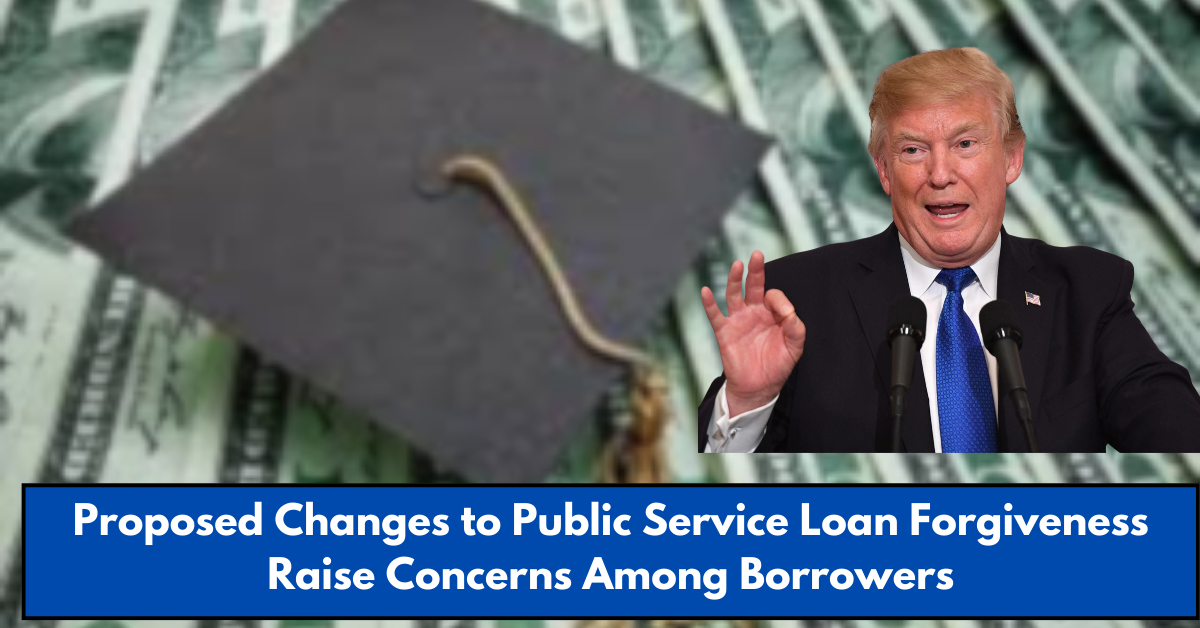Student loan policies in the United States could soon see significant changes under the Trump administration. These changes may impact repayment plans, loan forgiveness programs, and borrowing limits, affecting millions of borrowers across the country.
With the government exploring modifications to student loan policies, it is crucial for students and graduates to stay informed. This article breaks down the key changes that could take place and what borrowers need to do to prepare for them.
1. Adjustments to Income-Driven Repayment Plans
The Trump administration has proposed merging multiple Income-Driven Repayment (IDR) plans into a single plan. Under this new plan, borrowers would pay 12.5% of their discretionary income each month toward student loan repayment.
This is a significant increase from the current 10% rate under existing IDR plans. Additionally, the SAVE Plan, which caps payments at 5% for undergraduate borrowers, is currently paused due to legal disputes. If Trump’s proposed changes move forward, borrowers will need to prepare for higher monthly payments.

Impact on Borrowers:
- Higher monthly payments for some individuals
- Increased financial burden, especially for those with lower incomes
- Need to reassess budgeting strategies to accommodate new repayment terms
2. Changes to Student Loan Forgiveness Timelines
Currently, borrowers on IDR plans can qualify for student loan forgiveness after 20 to 25 years of consistent payments. However, the proposed changes would reduce this timeline to 15 years for undergraduate borrowers while extending it to 30 years for graduate borrowers.
This means that while undergraduate borrowers may benefit from a shorter repayment period, those with graduate loans may have to wait even longer for their debt to be forgiven.
What Borrowers Should Consider:
- Those with undergraduate loans could see earlier debt relief
- Graduate loan borrowers may need to adjust long-term repayment plans
- Financial planning becomes crucial to handle potential changes
3. Uncertainty Over Public Service Loan Forgiveness (PSLF)
The Public Service Loan Forgiveness (PSLF) program, which allows certain government and non-profit employees to have their loans forgiven after 10 years of service, is under scrutiny.
Although the Biden administration recently approved debt relief for 55,000 borrowers under PSLF, the Trump administration has previously attempted to eliminate the program. While past efforts to repeal PSLF have failed, new proposals could bring significant modifications or even an end to the program.
How This Affects Public Service Workers:
- Teachers, healthcare workers, and government employees may lose loan forgiveness benefits
- Existing PSLF borrowers may be exempt from changes, but new applicants may face uncertainty
- Borrowers should keep track of official announcements regarding PSLF status
4. Increased Privatization of Student Loans
The Trump administration is considering moving toward privatization in the student loan industry. If this happens, it could mean fewer federal loan options and an increased reliance on private lenders.
Private student loans often come with higher interest rates and fewer repayment options than federal loans. If federal loan options become limited, more students may be forced to take out private loans, which can be riskier and more expensive in the long run.
Key Concerns:
- Federal protections such as deferment and forbearance may be reduced
- Private lenders could increase loan costs with higher interest rates
- Borrowers should carefully compare loan terms before choosing a private lender

5. Possible Changes in Interest Rates and Loan Borrowing Limits
Another major potential change involves adjustments to interest rates and borrowing limits for student loans. The Trump administration has suggested streamlining federal loan programs, which could result in changes to how much students can borrow and at what interest rates.
If borrowing caps are lowered, students may have to rely more on private loans, which often come with higher costs. Additionally, fluctuating interest rates could make repayment more expensive for future borrowers.
What Students Should Watch For:
- Possible lower borrowing caps for federal loans
- Higher interest rates leading to increased repayment costs
- Need for careful planning when taking out new student loans
What Can Borrowers Do Now?
Since student loan policies are still uncertain, borrowers should take proactive steps to prepare for potential changes. Here are some key actions to consider:
- Stay Informed: Follow updates from the U.S. Department of Education and loan servicers to track policy changes.
- Review Repayment Plans: Check if your current plan will still be the best option if new policies take effect.
- Consider Loan Consolidation: Combining loans into a single payment may provide more manageable terms.
- Build an Emergency Fund: Setting aside money can help in case of unexpected repayment increases.
- Seek Financial Advice: Consulting a student loan expert can help you navigate upcoming changes.
With potential reforms on the horizon, staying ahead of policy changes is crucial for borrowers looking to manage their debt effectively.
Conclusion
Student loan policies in the U.S. are expected to change under the Trump administration, potentially affecting repayment plans, forgiveness programs, and loan availability. Borrowers should stay informed, review repayment options, and prepare for possible financial adjustments.
By taking proactive steps now, students and graduates can better navigate these policy changes and secure a more stable financial future.
This article has been carefully fact-checked by our editorial team to ensure accuracy and eliminate any misleading information. We are committed to maintaining the highest standards of integrity in our content.

Filza specializes in simplifying financial topics for everyday readers. Whether breaking down Canada’s tax guides or U.S. benefits like SNAP and VA Disability, Filza’s relatable writing style ensures readers feel confident and informed. Follow her insights on LinkedIn or reach out via email at [email protected].




